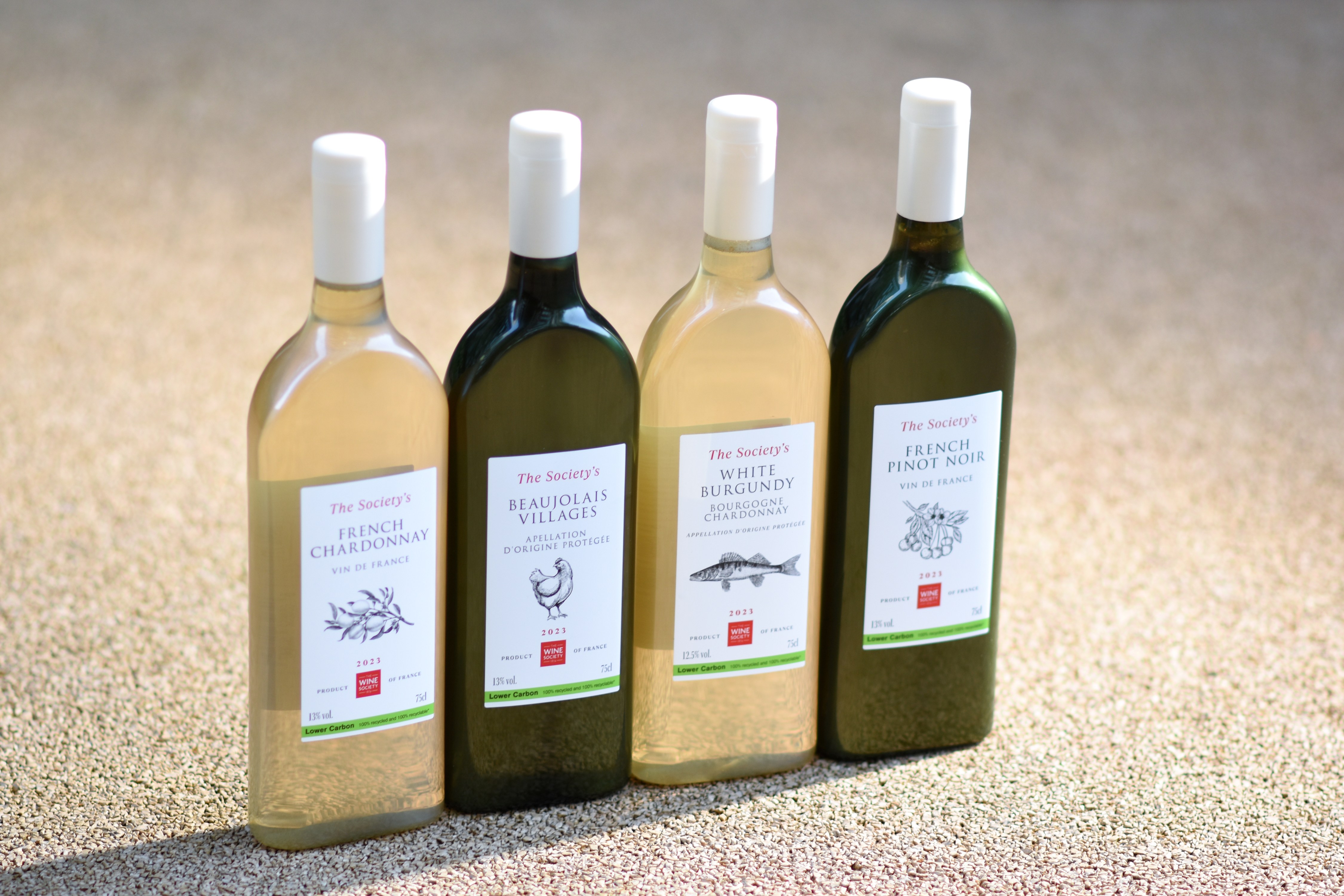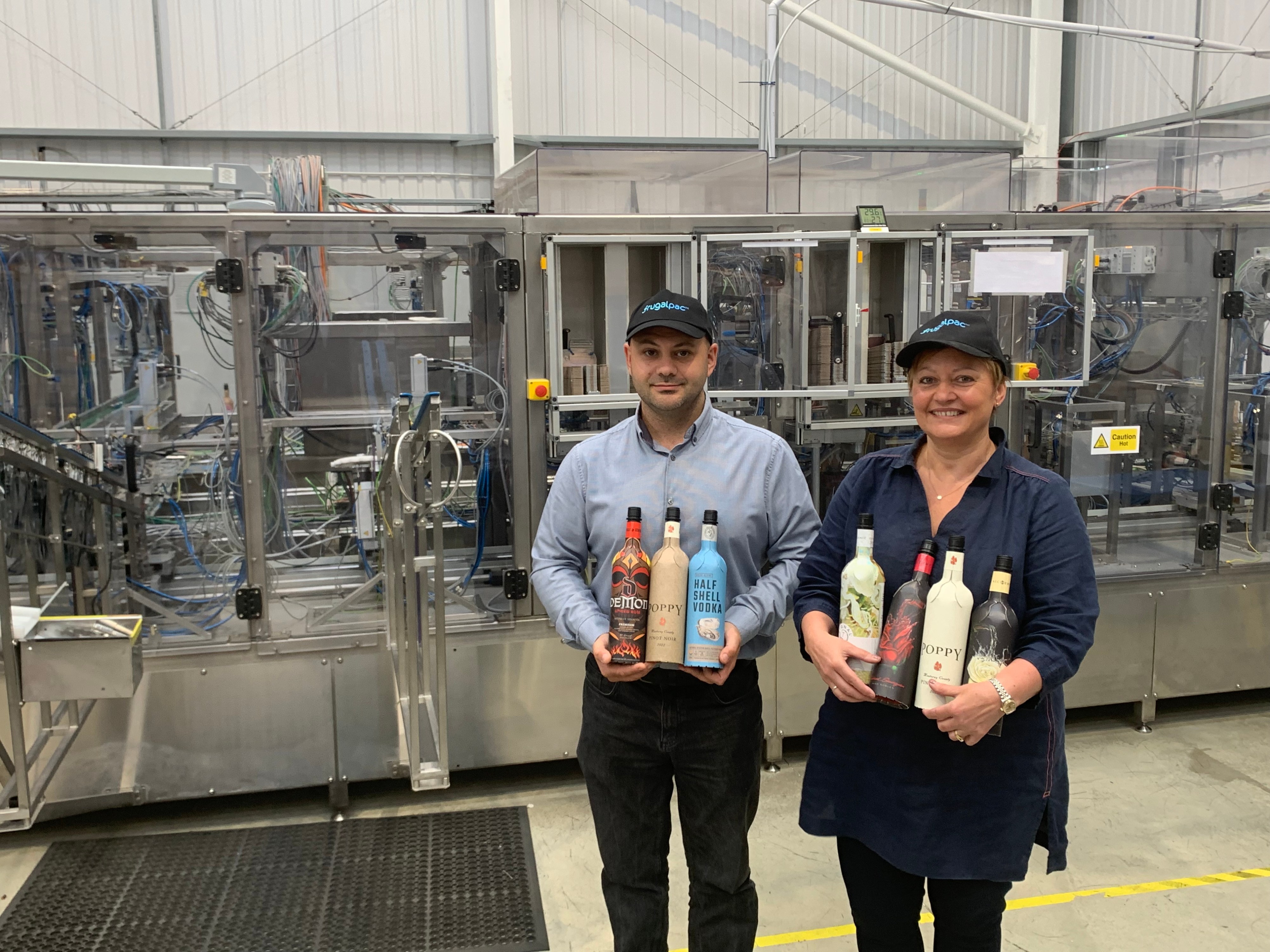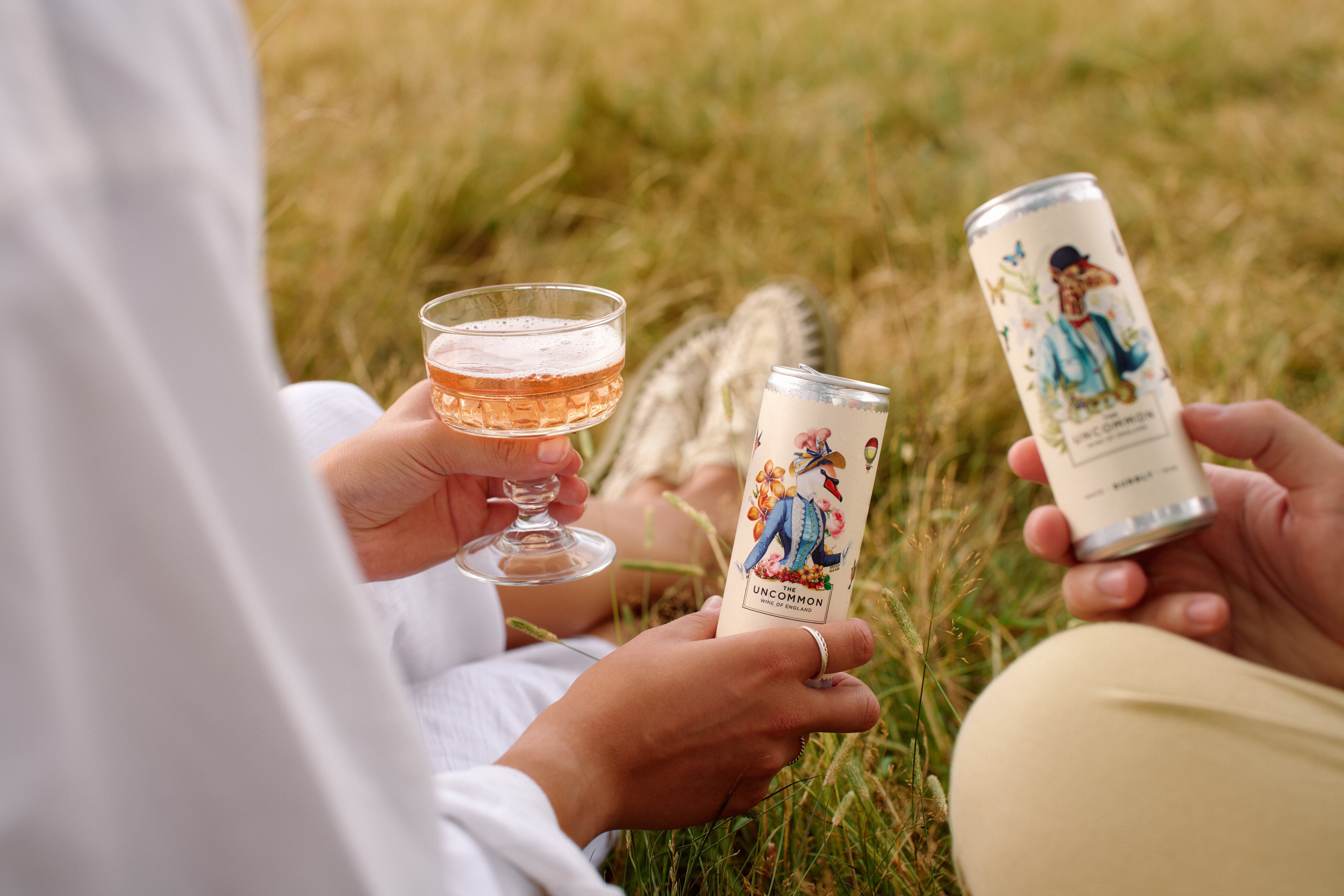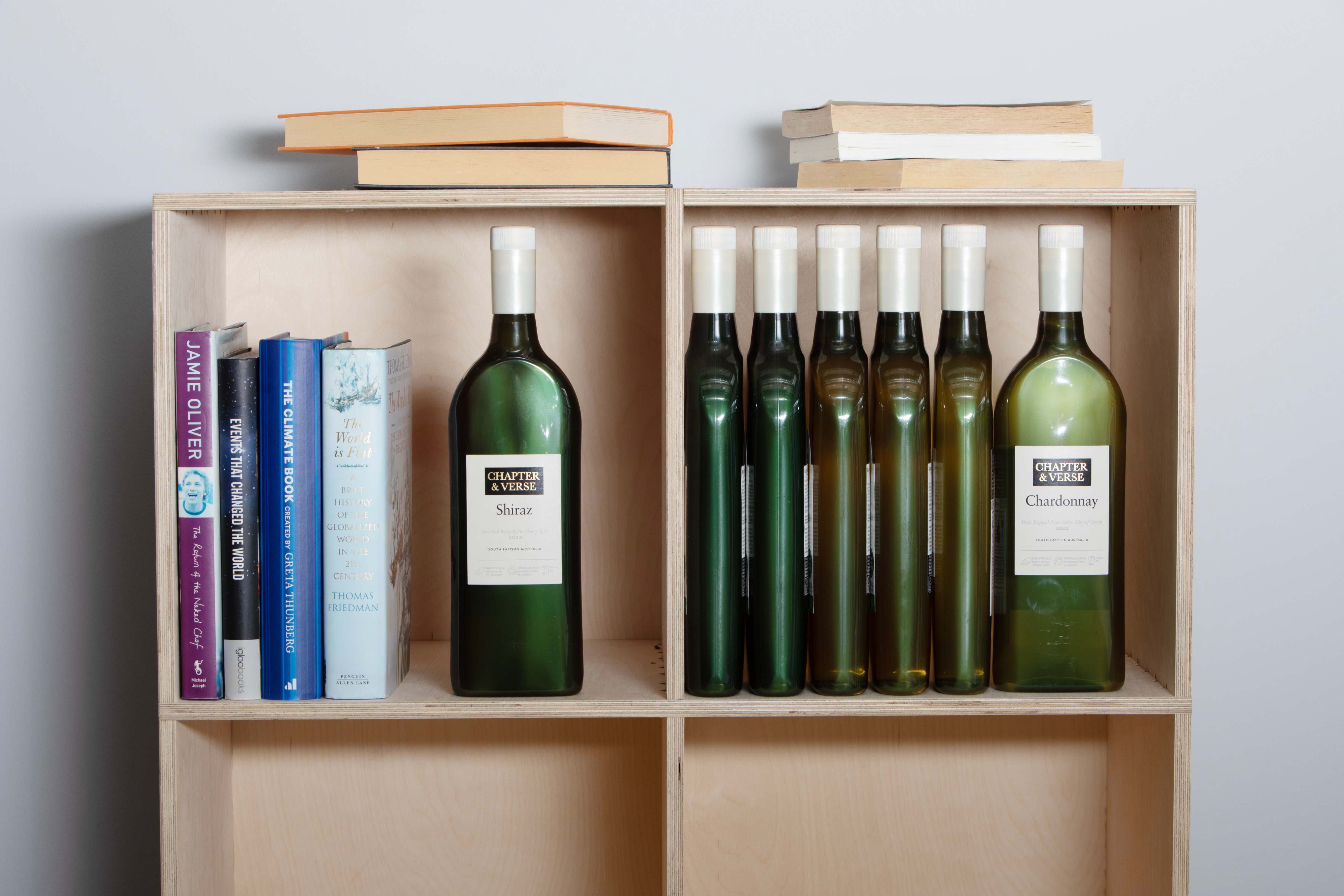Innovation in the field of wine packaging is all pointing in one direction at the moment – towards sustainability.
Sustainability is somewhat at odds with consumer perception. Anything not in a traditional glass bottle – and more often than not, with a traditional closure – is eyed with mistrust.
The perception that anything other than a standard glass bottle denotes a drop in wine quality is by far the biggest barrier to wine packaging becoming more environmentally friendly, since the reductions in carbon emissions in terms of production and transportation that are theoretically available are significant. How can this obstacle be overcome?
“The unique problem with alternative formats is currently the cost. A lot of those who would be willing to try them are stifled,” said Chris Haywood of Astley Vineyard in Worcestershire. “The big producers need to step in and start offering these formats. When they get good reviews, the perception will change and large scale production of these formats can be developed. That would drive down the price, which is the main challenge for us small producers. After all, good wine in a different format is still good wine.”
Vineyard Magazine rounds up some of the innovative technologies being developed and asks their manufacturers how they intend to win over the hearts and minds of the wine drinking public in the UK.
Environmentally friendly bottling plants
A new wine bottling plant, opened in October 2024 for Greencroft Bottling in County Durham, promises an environmental approach. It has been described by founder Tony Cleary as “the most sustainable building of its kind on the planet.” It is expected that at full capacity Greencroft will produce 20,000 bottles per hour.
The building – Greencroft Two – includes a £5.5m investment in green technology, including cladding that gives the maximum possible thermal insulation, an energy storage system, a significant solar array on the roof and three on site wind turbines. The design is intended to make the plant completely self-sufficient in terms of electrical energy.
Greencroft is owned by the Lanchester Group. The group includes Lanchester Wines, a wine merchant and importer, who feature London Cru, Bolney Estate, Halfpenny Green and Lyme Bay products within their portfolio.
Reducing glass consumption
A significant part of the carbon footprint of every bottle of wine comes from the glass production process, and there can be a large financial and environmental cost attached to shipping that glass to the consumer. Despite the perception that a heavier bottle denotes a higher quality of product, some producers have been working to reduce the weight of their bottles – Alois Lageder in Italy created the ‘Summa’ bottle which reduced the weight from 650g to 450g. They did not patent the design to make it accessible to other wineries. The move has significantly lowered its glass consumption and opened up opportunities for others to follow suit.
Some wine producers, the largest being Viña Concha y Toro, have signed up to an initiative called the Bottle Weight Accord. This denotes a commitment to reduce the average weight of their 750ml still wine bottles to 420g or less by the end of 2026. This initiative was set up by a UK group called the Sustainable Wine Roundtable (SWR) in late 2023. As well as wine producers, a number of large wholesalers and retailers have also signed up to the accord.
The SWR states that the 420g commitment is just the beginning. They promise to “explore further reductions and additional measures to decrease the carbon impact of wine packaging.”
One of the additional measures will be considering how sparkling wine bottles can be made in a lighter weight. Champagne Telmont, who are majority owned by Rémy Cointreau, has already made headway here – working with the manufacturer Verallia in an attempt to reduce the weight of its sparkling bottles, while retaining the capacity to withstand the requisite pressure. At the moment they have been able to reduce from Verallia’s own 835g benchmark to 800g and hope that it will be possible to reduce this still further for an even bigger impact on their CO2 footprint.
Verallia’s mainstay 835g bottles, which can be made with up to 100% recycled glass, are currently used by Digby Fine English in West Sussex. Their bottles are 15% lighter and generate 15% less CO2 during manufacture than traditional sparkling wine bottles.
Plastic bottles
While glass remains the best material for the long term storage of wine, it is often stated that most wine is made to be drunk young, and consumed within a few weeks of purchase. Given that fact, it makes sense to look at alternative materials that can claim better environmental credentials for some wines. Petainer are making lightweight (49g) plastic wine bottles that are offered as one-way vessels or a refillable alternative. They come in clear and coloured options and reduce transportation costs as well as keeping the familiar look of a glass bottle.
Packamama has developed a unique flat wine bottle shape – allowing ten bottles to be packed into the space where four standard round bottles would fit. They are made from 100% recycled PET – polyethylene terephthalate which is a stable, inert plastic. It is the most widely recycled polymer globally. The bottles weigh 63g each.
The brand is still looking for English and Welsh wine partners, but they are optimistic about the market for their innovative design:
“We have definitely seen a strong level of curiosity and interest in the shape, material and the practicality of our packaging. Consumers are realising how easy it is to carry our bottles in their shopping bags alongside other items, how well they fit in their fridge, how much more wine they can carry, and how the bottle balances strength with lightness.
Additionally, the fact that the bottle is shatterproof has been a major plus for many customers. As sustainability becomes an even greater focus, consumer awareness will be the key driver for this shift.”

Paper bottles
Ipswich-based Frugalpac make the Frugal Bottle – which they describe as “the world’s first and only commercially available paper bottle for wines and spirits.” It was launched in June 2020 and is made from 94% recycled paperboard with a food grade pouch inside to hold the liquid. The resulting bottle is five times lighter than glass and produces a carbon footprint which is six times lower than the traditional bottle.
The Frugal Bottle has seen mixed success in the UK. Before launching the bottle to market in 2020, Frugalpac commissioned a Survation poll of 1,741 wine drinkers across the UK which found 63% would buy a Frugal Bottle, so the outlook was promising. They have won several supermarket listings here, including Greenall’s gin in Sainsbury’s in 2022 and When in Rome’s two SKUs in the same supermarket in 2023. When in Rome have gone on to secure listings with their Frugal Bottle packaging in Ocado (Waitrose) as well.
The first English wine to be released in this format in the UK was by winemaker Neil Walker on his online store, The English Vine. There was much fanfare in the summer of 2021 and although Neil was able to secure a listing at Laithwaites for his 2021 Redbrook Estate Bacchus, no further vintages of the Redbrook Estate wine in Frugal Bottles appear to have been made, and all paper bottle listings have subsequently been dropped by The English Vine. Laithwaites now offers only one paper bottle option from a non-UK producer amongst its range, so it appears that there is still work to do. Despite this, Frugalpac are taking on the challenge enthusiastically.
This year they are working with The Royal Agricultural University (RAU) which has established the Cotswold Hills Wine project. The award-winning social enterprise began in 2016, taking on the tenancy of a six acre vineyard outside Cirencester.
“The students have opted to join the paper bottle revolution,” said RAU Head of Enterprise Katy Duke. “They are producing a small run of our 2024 White Blend in Frugalpac’s paper bottles to help reduce our carbon footprint. They will have to navigate several challenges along the way after the first tasting of the 2024 vintage in February, including finalising what equipment is required to fill Frugal Bottles.”

The Frugal bottle machine
Canned wine
Cans are infinitely recyclable and much lighter than glass. Three 250ml cans weigh 30g against 500g per still bottle. From a consumer point of view, they are also quicker to cool and high value wines can be offered in single serve cans where the cost of a bottle is prohibitive. But recycling rates vary and some designs require virgin aluminium in their production, so they may still have a high environmental cost to produce.
However, wine in cans does seem to be reaching a more accepting market than paper bottles have so far. Tesco currently carries six brands, for example, including English wine spritzers from The Uncommon. Ocado also carries The Uncommon spritzers and sparkling wines, along with a canned range from When in Rome.
“We’ve been crafting English wines in cans for eight years now,” says Henry Connell, co-founder of The Uncommon. “As the pioneers in this space, we’ve seen growth accelerate in the last few years as more people embrace this modern, sustainable way of enjoying wine.
“Lifestyles are shifting and there are many moments where cans solve a real problem – whether it’s on airlines, at outdoor venues, or even at home when you don’t fancy opening a whole bottle. We’ve shown that you can have the very best quality in this sustainable format. Our wines regularly win awards alongside the world’s finest bottles and continue to score highly with critics like Jancis Robinson.
“While bottles will always have their place, cans present a real opportunity to engage a younger audience and those who want to drink “less but better”. They offer convenience, smaller serves, and sustainability in ways traditional packaging simply can’t – making high-quality English wine more accessible.”
There is definitely potential for cans to become the new cool. In decades past, most canned beers were eyed with suspicion by consumers. The oversized Watneys Party Seven bulk container, launched in 1968, is generally remembered with a sense of distaste and regret. The Campaign for Real Ale campaigned vehemently against beer cans in the late seventies and early eighties, encouraging consumers instead to enjoy draught cask beer in their local pubs.
But since then, the rise of craft beer has seen cans become practically the standard form for small pack beer, and ubiquitously associated with high quality, premium brands. They are convenient for the brewers; being cheap to make, inert and easier to handle and transport. They have also proved to be a vehicle for endlessly creative and eye-catching branding, often including collaborations with local artists, which have helped keep sales buoyant.

Kegged wine
Some parts of the hospitality trade are enthusiastic about wine on tap. It’s not new – this option has been offered by cut-price pub chain Wetherspoons for two decades. However, now there is a push to reconsider the format because of the environmental credentials.
Reusable steel kegs have been claimed to reduce the carbon footprint of a venue “by 96% in the long run”, say The Sparkling Wine Co., who supply wine and cocktail kegs across the UK. Kegged wine also helps to reduce costs for venues and reduces wastage, as well as being easier for the trade to store.
Sustainable closures
Screw cap closures are a notable exception to the rule, having somewhat bucked the trend for consumers to stick to what they know in recent decades. Generally speaking, screw caps have become more acceptable, although they are still viewed with mistrust at the premium end of the market. However, traditional natural cork closures are mounting a comeback, because of how they are farmed.
The development of ‘technical corks,’ like Diam Bouchage’s closures, and improved processes in the factories have helped to address the quality issues that were historically associated with cork. While cork trees are very slow growing, their forests – montados – in Portugal and Spain provide a sustainable form of agriculture that supports a well paid opportunity for the skilled workers that harvest it.
The process of harvesting actually triggers an acceleration in the carbon sequestration process by stimulating the tree to regenerate a new layer of bark. This regeneration requires an increase in photosynthesis, which means that more carbon dioxide is absorbed.
In recognition of this renewed demand for cork, UK bulk wine bottlers Encirc Beverages and Broadland Drinks are installing lines that can close bottles with cork, in addition to their existing screw cap lines. Encirc made the move in 2024 after a request from a “top 20” wine brand to provide the service.
One of the issues often raised with the use of corks is the lack of proper facilities to recycle them. Recorked UK is one of the UKs leading natural wine cork recycling programs. They work with a range of vineyards, wine merchants and hospitality venues to collect corks which are resold. A percentage of their profit is donated to charities who support the environment. English wine producers already on their books include the Langham Wine Estate, a’Beckett’s and Denbies Wine Estate.
Sustainability initiatives
As well as working on direct solutions to bringing sustainable packaging alternatives to market, larger retailers are using collaborations with environmental charities to make a tangible difference and convince consumers of their eco credentials.
At the end of 2024, Waitrose began a trial of cork collection points at six of their stores in south west England. The corks they gather will be collected by Wine Logistics, who are based in the south west, for transportation to cork producer Amorim in Portugal. They reprocess the closures into products like flooring, insulation and mulch. Should the scheme be rolled out nationwide, Waitrose is looking to find a UK-based processor so that the carbon impact of transporting the corks to Portugal could be negated.
Discount supermarket Aldi has also come up with a green project of its own, recently launching an own label wine called Kooliburra Hidden Sea Chardonnay. The Hidden Sea is a wine company that works with the ReSea Project to remove the equivalent in weight of 10 plastic bottles from the ocean for recycling for every bottle of wine they sell, including those from Aldi.
This partnership is The Hidden Sea’s first with a UK supermarket and they hope to build on the impressive equivalent of 31 million plastic bottles that they have already removed from the world’s oceans since their launch in 2021.
The Chardonnay is not Aldi’s first foray into sustainable wine projects. They launched their first paper and flat recycled PET wine bottles last year, which won them a gold for Sustainability Pack of the Year at The Grocer’s New Product and Packaging Awards 2024. However, it must be noted that the paper and PET bottles are no longer featured on the supermarket’s shelves. The technology is there, but the battle for the hearts and minds of the wine-drinking public still rages on.

Aldi bottles
For more like this, sign up for the FREE Vineyard newsletter here and receive all the latest viticulture news, reviews and insight




